WHOWHATWHY STAFF
The training of the suspected shooter, Mohammed Alshamrani, was paid for by the Saudi government. CNN cited a law enforcement source saying that Alshamrani — a second lieutenant in the Royal Saudi Air Force — was vetted upon entry to the US and his background checked again after the shooting with no red flags discovered.
And the case becomes more and more bizarre. The night before the shooting, Alshamrani reportedly gave a dinner party for three other Saudis during which time they watched videos of other mass shootings.
At least one of those men apparently also videotaped outside the building during the shooting at the naval base, as the other two sat in a car watching. Coincidence? Or did they have advance knowledge of what was to take place? Later, they told investigatorsthat they “just happened to be there at the time.”
On Saturday evening, the Washington Post reported being told by an official that “There are no indications of a conspiracy at the moment.” And he added “Alshamrani may have been self-radicalized.” The Post also reported that Alshamrani wrote a letter shortly before the shootings condemning the US for “funding crimes against Muslims,” and for supporting Israel.
Saudi extremist activity in Florida involving figures tied to the Saudi government is certainly not new. But the details have seemingly not drawn any sustained interest by US authorities. In fact, quite the opposite: Inquiries, including by law enforcement, seem to have been shut down.
Perhaps the strangest story involves ties between the 9/11 hijackers and a Saudi family living in Sarasota, FL, until just before those attacks. WhoWhatWhy investigated that matter, and was struck by the lack of interest shown by officials in the deeply disturbing particulars, which suggested possible awareness of the 9/11 plot at high levels of the Saudi royal family.
It seems worth considering how much the US’s dependence on oil from the Arabian Peninsula figures in any failures to probe — just as the US was very quick to let members of the Saudi royal family in the United States at the time of the attacks leave the country without being interrogated, despite severe restrictions on flights.
It also is very careful not to use incendiary wording like “terrorist” when it involves the Saudis, including those in the Pensacola case.
President Donald Trump declined to say whether the shooting was related to terrorism, and he seemed more concerned with dissassociating the Saudi government from the shooter. He tweeted “The King said that the Saudi people are greatly angered by the barbaric actions of the shooter, and that this person in no way shape or form represents the feelings of the Saudi people who love the American people.”
However, Rep. Matt Gaetz, (R-FL), an outspoken Trump loyalist who represents Pensacola, did not hesitate to call the act terrorism, and to demand that the Saudis in no way interfere with the investigation of the mass shooting.
Critics have noted that the forbearance granted Saudi Arabia is exceptional — certainly not a courtesy that would have been extended had suspects been from, say, Iran.
.
We republish our original work here on the 9-11 attacks because we believe the full story and context still warrant scrutiny. More so because of the Pensacola shootings. It’s a continuing tale and a continuing mystery.
WhoWhatWhy has found evidence linking the Saudi royal family to Saudis in South Florida who reportedly had direct contact with the 9/11 hijackers before fleeing the United States just prior to the attacks. Our report connects some of the dots first laid out by investigative author Anthony Summers and Florida-based journalist Dan Christensen in articles jointly published in the Miami Herald and on the nonprofit news site BrowardBulldog.org.
In early September of this year, Summers and Christensen reported that a secret FBI probe, never shared with Congressional investigators or the presidential 9/11 commission, had uncovered information indicating the possibility of support for the hijackers from previously unknown confederates in the United States during 2001.
Now WhoWhatWhy reveals that those alleged confederates were closely tied to influential members of the Saudi ruling elite.
As reported in the Herald, phone records documented communication, dating back more than a year, that connected a Saudi family then living in a house near Sarasota, Florida, with the alleged plot leader, Mohammed Atta, and his hijack pilots—as well as to eleven of the other hijackers. In addition, records from the guard house at the gated community tied Atta’s vehicle and his accomplice Ziad Jarrah to actual visits to the house. Although requiring further investigation, this information suggests that the house may have functioned as an operational base for the hijackers.
According to interviews and records examined by The Herald, Anoud and Abdulaziz al-Hijji and their young twins abruptly departed their home in Sarasota only days before September 11, 2001 and traveled to Arlington, Virginia, where they stayed briefly at another house owned by Anoud’s father, Esam Ghazzawi.
Then, still well before 9/11, the entire group, now including the father, flew to London and on to Riyadh, Saudi Arabia. The Sarasota house was sold in 2003, as was a penthouse apartment in another DC, suburb, Rosslyn, Virginia. The Ghazzawis do not seem to have set foot again in the United States.
New Revelations
Building on these revelations, WhoWhatWhy has found documents laying out the Ghazzawis’ royal connections through a nest of Saudi corporations that share the name EIRAD. Esam Ghazzawi is director of EIRAD Management Company, the UK division of EIRAD Trading and Contracting Co. Ltd., which among other things holds the Saudi franchise for many multinational brands, including UPS. Esam’s brother Mamdouh, whose name shows up on public records associated with family properties in the U.S., is the Executive Managing Director of the parent firm, EIRAD Holding Co. Ltd. EIRAD has connections to the US government via contracts. In 2008, records show, the State Department paid EIRAD $11,733 for rental of facilities, presumably in Saudi Arabia.
There is no indication that the company itself, or any of its officers or employees, have any connection to the 9/11 incident, or knowledge of anything regarding Mr. Ghazzawi’s activities in the United States. Calls for comment to the company’s main switchboard went unanswered during normal business hours; its website was not functioning properly and Saudi trade officials in the United States had not furnished alternative contact information at publication time.
But the now-revealed link between the Ghazzawis and the highest ranks of the Saudi establishment reopens questions about the White House’s controversial approval for multiple charter flights allowing Saudi nationals to depart the U.S., beginning about 48 hours after the attacks, without the passengers being interviewed by law enforcement—despite the identification of the majority of the hijackers as Saudis.
In addition, the new revelations draw further attention to a web of relationships that include the long and close business, personal and political ties between the Bush family and the Saudi royal family.
Saudi money is woven throughout business ventures connected to the Bushes. Saudi funds even helped bail out George W. Bush’s failing oil company early in his life. Jim Bath, a close friend of Bush in the Texas Air National Guard, went on to start a business in conjunction with two sons of powerful Saudi families—Khalid bin Mahfouz, whose family provides banking services to the Saudi royals, and Salem bin Laden, heir to the bin Laden family’s global construction empire and a half brother to Osama bin Laden. (For a detailed probe of the Bush family’s dealings with the Saudis, including substantial previously unreported material, see my book, Family of Secrets: The Bush Dynasty, America’s Invisible Government and the Hidden History of the Last Fifty Years.)
Details of The Herald’s Revelations
The Ghazzawi presence in the Sunshine State predated 9/11 by at least six years. In 1995 a young Saudi woman named Anoud Ghazzawi living in South Florida married a fellow Saudi native, Abdulaziz al-Hijji (English spellings of his first name and surname vary, as is typical of Arabic names.) Anoud’s father, Esam, and his American-born wife Deborah bought the couple a stylish, three-bedroom house in a gated community in Sarasota. The house remained in the elder Ghazzawis’ names while the young couple lived there and began a family.
Six years later, less than two weeks before the 9/11 attacks, Anoud, Abdulaziz and their children left their home on or about August 30, 2001 in great haste, taking off in a white van. This was about the same time that the hijackers were purchasing their tickets for the targeted flights.
The family apparently left with no advance planning, leaving behind almost all their possessions, abandoning three recently registered vehicles, including a brand-new Chrysler PT Cruiser, in the garage and driveway. As the Herald article explained:
“there was mail on the table, dirty diapers in one of the bathrooms … all the toiletries still in place … all their clothes hanging in the closet … opulent furniture, equal or greater in value than the house … the pool running, with toys in it….The beds were made … fruit on the counter … the refrigerator full of food. … It was like they went grocery shopping. Like they went out to a movie … [But] the safe was open in the master bedroom, with nothing in it, not a paper clip. … A computer was still there. A computer plug in another room, and the line still there. Looked like they’d taken [another] computer and left the cord.”
After public disclosure of Saudi involvement in the 9/11 attacks, people in the gated community took note of the rushed departure and disappearance of the Ghazzawi-al-Hijjis. After all, the attackers were not just overwhelmingly of Saudi nationality, but three out of four of the future hijackers had lived and trained to fly in Venice, Florida, just 10 miles away from the house.
The complex’s security officer alerted the FBI, which began an investigation into the house at 4224 Escondito Circle. (In addition, a suspicious neighbor alerted the FBI by email on the day of the attacks.)
The Justice Department declined to give the Herald a statement, but, according to an unnamed senior counterterrorism officer who was one of two people who got into the house first and served as a key source for the paper, the investigation bore stunning fruit.
Phone records showed communication, dating back more than a year, that connected those in the house with the alleged plot leader, Mohammed Atta and his accomplices, including eleven of the other hijackers. Other records, kept by guards at the gated community, documented numerous visits to the house by a vehicle known to have been used by Atta, and indicated the physical presence in the car of Atta’s purported accomplice Ziad Jarrah. It appeared as if the Ghazzawi house was some kind of nerve center for the entire operation.
According to the senior counterterrorism officer, both Esam Ghazzawi and his son-in-law al-Hijji had been on a watch list at the FBI predating 9/11. An unnamed U.S. agency tracking terror funds had also taken an interest in them. “464 was Ghazzawi’s number,” the officer said. “I don’t remember the other man’s number.”
Secrecy Reveals Little Official Curiosity—or Coverup?
These stunning revelations—said to be based on the work of the swarm of FBI agents who descended on the gated community in the fall of 2001—would surely have generated headlines worldwide if they had become known after 9/11. But the FBI, for reasons unknown, failed to provide the information to Congressional 9/11 investigators or to the presidential 9/11 commission, and thus it has remained a secret for the past decade.
In response to the Herald article, the FBI has issued a statement saying that the occupants of the house had been tracked down and interrogated, and were found to have no connections to the hijackers. It is not clear when these interrogations are supposed to have taken place, or whether they were conducted by the FBI or by Saudi intelligence. But given the FBI’s poor track record for candor in the matter, the statement is being viewed with some skepticism.
Adding to these doubts is an ineffective effort by the Bureau to woo the house owners back to Florida. According to Scott McKay, a lawyer for homeowners’ association of the gated community, known as Prestancia, the FBI attempted to convince the Ghazzawis they needed to come back in person to sign documents related to unpaid back dues to the association. This attempt proved unsuccessful when the Ghazzawis simply arranged to sign the documents elsewhere. These facts, reported by The Herald, raise questions about the U.S. government’s determination to interview the couple: Esam Ghazzawi’s signature was notarized in Lebanon—by a U.S. official no less—the vice consul at the US embassy in Beirut. His wife’s signature was also notarized—elsewhere in the United States, in Riverside County, California.
The emergence of this information chagrined Bob Graham, the former Florida U.S. Senator. Graham was Senate Intelligence Committee chair (and a 2004 candidate for the Democratic presidential nomination) and served as co-chair of the congressional joint inquiry into 9/11. “At the beginning of the investigation,” he told The Herald, “each of the intelligence agencies, including the FBI, was asked to provide all information that agency possessed in relation to 9/11.” Graham noted that the Bureau also failed to turn over information connecting the hijackers to other Saudis living in California, which his own investigators later discovered on their own.
Just as strange, when Graham’s congressional investigators turned over a large body of information on the hijackers they had assembled to the presidential 9/11 Commission, it seemed uninterested. “They did very little with it,” Graham said, “and their reference to Saudi Arabia is almost cryptic sometimes. … I never got a good answer as to why they did not pursue that.”
About the new discovery in Sarasota, Graham said it “opens the door to a new chapter of investigation as to the depth of the Saudi role in 9/11.”
All Eyes on Prince Sultan
Of special interest is the Ghazzawis’ boss, the chairman of Eirad Holding Co. Ltd., Prince Sultan bin Fahd bin Salman bin Abdulaziz Al Saud. He is a prominent member of the ruling Saudi royal family. He is a great-grandson of King Abdulaziz (commonly referred to as Ibn Saud), founder of modern Saudi Arabia, and grandson of the current king.
His uncle is another Sultan – Sultan bin Salman bin Abdulaziz Al Saud. A leading advocate of teaching Saudis to fly, Prince Sultan is the founder and Chairman of the Board of the Saudi Aviation Club, and Chairman of the King Khaled International Airport (KKIA) Supervisory Committee. Since 2000, he has also headed Saudi Arabia’s tourism commission, placing him among a handful of the King’s grandsons to hold ministerial rank. One of his missions as head of the tourism commission is to repair the damage to Saudi Arabia’s image caused by the 9/11 attacks.
In a document released by Wikileaks, the U.S. Ambassador to Saudi Arabia, James B. Smith, characterizes Prince Sultan this way: “With a powerful father who is the Governor of Riyadh and a strong candidate to be the next crown-prince, Sultan is well positioned to move up the Saudi government ranks… Sultan has visited almost every state [in the U.S.]. He joked with the Ambassador that ‘perhaps the only states he has not yet visited are the Dakotas.’ ” (He is extra well connected, with one brother serving as the deputy oil minister)
Prince Sultan is closely allied with Prince Bandar bin Sultan bin Abdul-Aziz Al Saud, the former longtime ambassador to the United States, who is often called “Bandar Bush” for his friendly relationship with the Bush family. Sultan and Bandar have worked together for years to promote Saudi interest in aviation.
The Bushes and the Royals
The Bush family have long been regarded as friendly with the prince’s family and their associates. Prince Sultan’s NASA mission is perceived as having been orchestrated by George HW Bush as a favor to the Saudis. Associates of the Bush family have many connections with the Prince’s family. Prince Sultan’s father’s legal counsel is William Jeffress Jr, of Houston-based Baker Botts LLP, where James A. Baker III, longstanding advisor to the Bush family, including both Presidents Bush, is a senior partner. At the time of the 9/11 attacks, Baker held the post of Senior Counselor for the Carlyle Group, a global asset management firm which is heavily invested in military contracting stocks; among Carlyle’s large investors were the bin Ladens. (In a curious coincidence, Baker watched the live television coverage of the attacks from the Ritz-Carlton Hotel in Washington, where he and representatives of Osama bin Laden‘s extended family were attending the Carlyle Group’s annual conference. In another odd coincidence, President George W. Bush himself was in Sarasota, reading to schoolchildren, at the very time the Sarasota-area-based terrorists were hijacking the planes. Indeed, he was a short distance from the home the Ghazzawis had recently abandoned.)
President Bush’s actions in the aftermath of the World Trade Center and Pentagon assaults with regard to the Saudi royal family have long been known but have yet to be fully explored. Shortly after the attacks, President Bush permitted an exception to the ban on air traffic so that planes could take prominent Saudis out of the country. One of those leaving on the flights was the late Prince Ahmed bin Salman, brother of Prince Sultan.
In a 2004 letter to the New York Times, Prince Sultan responded to allegations surrounding those flights, and pointed to a conclusion in the 9/11 commission report: ”Our own independent review of the Saudi nationals involved confirms that no one with known links to terrorism departed on these flights.” (Another Saudi who left the US after 9/11 was the architect Abdel Wahed El-Wakil, who had a base in Miami and serves as an advisor to Prince Sultan.)
Allegations of Saudi Royal Complicity
Sultan’s brother Prince Ahmed was the most westernized of the Saudi set. He raised racehorses in Kentucky and was the owner of the 2001 Kentucky Derby winner, with the perhaps unfortunate name “War Emblem.” Allegations concerning Prince Ahmed emerged in the 2003 book, Why America Slept, by the bestselling author Gerald Posner. Posner says that intelligence sources told him how in March, 2002, under interrogation (but before he was waterboarded 83 times in August), Al Qaeda’s purported chief of operations, Abu Zubaydah, relaxed and began cooperating. Tricked into thinking he was in Saudi custody, Zubaydah asked his interrogators to call a senior member of the Saudi Royal family, who he said was his contact. He provided, from memory, the man’s private home and cell phones. This contact, according to Posner, was Prince Ahmed.
Zubaydah is alleged to have said that Osama bin Laden had cut a deal with a top Pakistani military official, Air Marshal Mushaf Ali Mir, who was close to Islamist elements in Pakistani intelligence. According to this account, the Saudi intelligence chief, Prince Turki, signed off on this, and agreed to provide aid to the Taliban in Afghanistan and not to go after Al Qaeda so long as the terrorist group kept its gun sights trained away from the Saudi royals.
In this version of events, Zubaydah is said to have also implicated Prince Sultan, along with another cousin, Prince Fahd bin Turki bin Saud al-Kabir, as Al Qaeda backers, and to have claimed that the Pakistani Air Marshal Mushaf Ali Mir and Saudi Prince Ahmed knew in advance about the 9/11 attacks.
Though the interrogators were skeptical of these claims, Zubaydah often proved credible. Information he provided led to the capture of a senior al-Qaeda operative in Southeast Asia. Zubaydah would only talk when he thought he was in Saudi hands. When U.S. personnel, no longer posing as Saudis, confronted him, Zubaydah said he had made up his earlier statements. But investigators found no basis for believing the information to be false—and even found material that corroborated his claimed ties to high level Saudis. Not surprisingly, the Saudi and Pakistani governments insisted his claims were false in all respects.
One of the key figures named by Zubaydah, Prince Turki, had been removed from his position as Saudi intelligence chief on September 1, 2001, ten days before the attacks. Thus, he was apparently not in that post on the critical day. Yet, his removal was a temporary absence from the highest levels of Saudi leadership, and not necessarily an indication that he had fallen into serious disfavor. The next year, he was named Saudi ambassador to Great Britain, just as a shift in focus from Al Qaeda to Iraq was being pitched to the British. If Zubaydah’s claims are at all credible, the removal of Turki from an official position shortly before the attacks surely warrants additional analysis— as does the Ghazzawis’ hasty flight from the U.S. right in the same time frame.
According to the book The Eleventh Day, by Summers and his co-author Robbyn Swan, Zubaydah is not alone in asserting a Saudi-Al Qaeda deal:
In sworn statements after 9/11, former Taliban intelligence chief Mohammed Khaksar said that in 1998 Prince Turki, chief of Saudi Arabia’s General Intelligence Department (G.I.D.), sealed a deal under which bin Laden agreed not to attack Saudi targets. In return, Saudi Arabia would provide funds and material assistance to the Taliban, not demand bin Laden’s extradition, and not bring pressure to close down al-Qaeda training camps. Saudi businesses, meanwhile, would ensure that money also flowed directly to bin Laden.
***
Prince Ahmed and another royal, Prince Sultan bin Fahd bin Salman bin Abdulaziz, were among the fifteen Saudis spirited out of the US, with President Bush’s approval, on September 16, 2001, via Lexington, Kentucky—i.e., out of Prince Ahmed’s U.S. backyard. Prince Sultan bin Fahd is the nephew of Prince Ahmed and Prince Sultan, and the son of Prince Fahd bin Salman (see below) who died unexpectedly shortly before the 9/11 attacks.
“It appears as if they didn’t want to be around to be questioned as to what role they had played and the best way to avoid that was to get out of the country,” former Senator Bob Graham told the Sarasota Herald-Tribune.
As author Craig Unger notes in his book, House of Bush, House of Saud, FBI agents were stationed at all points of departure for the group of Saudis who massed in Lexington before departing the country, yet there’s no evidence they were asked any questions at all.
Ironically, Posner, who is regularly cited by the corporate media for his views on the JFK assassination (he is a leading defender of the conclusion that Oswald was the lone gunman), is largely ignored for his work on the Saudi-9/11 connection, where he does posit high-level involvement. Posner is a highly controversial and at times perplexing figure, but he insists he has solid intelligence sources, and the thrust of his claims have meshed with those of The New York Times intelligence reporter and best-selling author James Risen. As Risen wrote in his book State of War,
Ever since the September 11 attacks, the trail back from al Qaeda to Saudi Arabia has been an intriguing path, but one that very few American investigators have been willing to follow. . . . [B]oth before and after 9/11, President Bush and his administration have displayed a remarkable lack of interest in aggressively examining the connections between Osama bin Laden, al Qaeda, and the Saudi power elite. Even as the Bush administration spent enormous time and energy trying in vain to prove connections between Saddam Hussein and Osama bin Laden in order to help justify the war in Iraq, the administration was ignoring far more conclusive ties with Saudi Arabia. Those links are much stronger and far more troubling than has ever been previously disclosed, and until they are thoroughly investigated, the roots of Al Qaeda’s power, and the full story of 9/11, will never be known.”
Several of those alleged to have had knowledge of this putative scheme and its enormous implications met with untimely ends shortly after Zubaydah’s interrogation. In June, 2002, three months after Zubaydah’s capture, the man he identified as his controller, Prince Ahmed, died of what officials said was a heart attack while asleep. Another brother of Ahmed’s and Sultan’s, Prince Fahd bin Salman bin Abdulaziz, died of a heart attack on July 25, 2001, about six weeks before the 9/11 attacks. The death of Fahd, who preceded his brother as head of EIRAD, is described in a Riyadh-datelined article by Middle East Newsfile, as follows:
Prince Fahd died suddenly. Prince Fahd did not show any symptoms of any ailment. He had, however, made an appointment with a dentist at King Faisal Specialist Hospital in Riyadh to check a toothache.
A cousin, Prince Sultan bin Faisal bin Turki al-Saud, died when his car crashed en route to Salman’s funeral. Zubaydah had supposedly implicated Prince Sultan bin Faisal, and another royal, Prince Fahd bin Turki bin Saud al-Kabir. as Al-Qaeda supporters. All these men were in their forties. Still another key figure in Zubaydah’s monstrous scenario met an untimely death. On February 20, 2003, Mushaf Ali Mir, the Pakistani air force chief, his wife and fifteen others, were killed in a plane crash.
Not a hint of the above information appeared in the released portion of the presidential 9/11 commission report. It is not known whether any of it was in the 28 pages of material about Saudi connections that the Bush Administration censored on national security grounds.
A Long-Standing Relationship
The Ghazzawis’ relationship with the United States seems to date back to the 1950’s, when U.S. immigration records show that Abbas Ghazzawi visited New York. Abbas Ghazzawi was a prominent Saudi attorney. Esam, whose full name is Esam Abbas Ghazzawi, appears to be his son. (WhoWhatWhy was unable to reach Ghazzawi for comment on any of the matters in this article.)
Abbas Ghazzawi, arriving on a first class ticket on a connecting flight that originated in Saudi Arabia, was traveling in an elite entourage. One companion, Rasem al-Khalidi, was a high-ranking Saudi monetary official. Another, Faisal al-Hegelan, would years later serve in the all-important position of Saudi ambassador to Washington. He held that post during 1979-1983, a period that partly coincided with the Reagan-Bush Administration. His replacement was Prince Bandar, the Bush family friend jokingly called “Bandar Bush.”
The focus of Saudi royals in their dealings with the United States can be seen in the conduct of al-Hegelan. As ambassador, al-Hegelan was principally concerned with propping up the Saudi regime. He had seventeen military attachés assigned fulltime to lobby for the sale of the advanced command-and-control aircraft known as AWACS to the Saudi air force. (see P. 17 of the book Arab Reach, by Hoag Levins.) Overcoming heavy pressure on Washington from the Israelis, the Saudis succeeded in getting Congress to approve the AWACS sale. Al-Hegelan also led a lobbying campaign against Secretary of State Alexander Haig’s public support of Israel’s invasion of Lebanon. President Reagan, with strong input from his vice president, George H.W. Bush, removed Haig and replaced him with George Schultz, who sided with the Saudis; Schultz had been president of Bechtel, one of the largest construction contractors in Saudi Arabia, whose projects included the original Trans-Arabian Pipeline.
We find the Ghazzawi clan again in the United States in 1970, when the young Esam married the American Deborah G. Browning. The marriage didn’t last long—in July, 1971 they obtained a divorce in Orange County, California.
The first sign of the Ghazzawi clan on the east coast of the United States was in 1992, when Esam bought a penthouse apartment in the D.C. suburb of Rosslyn, Virginia. In various accounts, Esam is described as a banker or financier, who also works as an interior designer. He accrued additional property in Arlington, Virginia and Longboat Key, Florida, and his name turns up in connection with a fancy office building in the K Street lobbying corridor.
In this period, Esam’s name surfaced when investigators probing the monumentally corrupt Bank of Credit and Commerce International (BCCI) sought to recover assets from Saudi Prince Fahd bin Salman—brother of Prince Sultan bin Salman. The prince argued that his assets were being held in another account under Esam Ghazzawi’s name. Only low-level BCCI officials went to jail in the sprawling scandal, which involved banks and governments all over the world. Prince Fahd bin Salman is one of the relatives who died unexpectedly in the year of the 9/11 attacks. (The Reagan and George H.W. Bush administrations were repeatedly accused by investigators into the BCCI mess of obstructing their inquiries; it is worth noting that the Treasury Department official responsible for scrutinizing BCCI’s affairs in the Reagan-Bush administration was assistant secretary for enforcement John M. Walker Jr.—who happened to be George H.W. Bush’s cousin.)
In 1995, Ghazzawi’s daughter Anoud, living in South Florida, married Abdulaziz al-Hiijii, who was a university student in the area. Esam and Deborah Ghazzawi, apparently reunited sometime after their 1971 divorce, purchased the Sarasota home into which the couple moved. Abdulaziz appears to have received a B.S. and Masters of Information Systems from the University of South Florida. His Master’s should be noted in the context of only one of two items removed from the Sarasota house before the couple fled—a computer.
Today, the family seems comfortably ensconced back in Saudi Arabia. In August, 2003, Abdulaziz al-Hijji became a career counselor at the government oil company—Saudi Aramco—a position he retains to this day. He served on the committee holding a symposium about electronic services in the eastern (oil-producing) province of Saudi Arabia, held in Khobar in 2008.
We found the American-born Deborah Ghazzawi, posting online just three years ago for help on finding her username/password for a Saudi Blackberry sim card.
***
The seeming reluctance of the US government to pursue hints of possible Saudi complicity in the 9/11 attacks, wherever they might lead, is hardly an isolated failure. Richard Clarke, the chief counterterrorism official in both the Clinton and Bush administrations, has recently stated his view that the CIA made an unsuccessful attempt to recruit two of the hijackers as double agents before the 9/11 attacks, then scurried to cover up this bungled effort. Clarke thinks evidence points to the spy agency itself allowing the hijackers into the U.S. as part of this scheme. If Clarke is correct, this would be another case of interested parties in the government keeping the truth bottled up for their own purposes.
Even more disturbing, the final section of the Congressional inquiry’s report, on “sources of foreign support for some of the Sept. 11 hijackers,” was totally redacted. It is still unavailable to the public on the 10th anniversary of the attacks. Both Graham and his GOP counterpart, Sen. Richard Shelby of Alabama, determined that national security would not be harmed by releasing those pages. Yet they were withheld—on the orders of George W. Bush.
Graham told the reporters he thinks suppression of the material provided “protection of the Saudis from embarrassment, protection of the administration from political embarrassment … some of the unknowns, some of the secrets of 9/11.”
Tellingly, the venerable British insurance company Lloyd’s of London actively investigated Saudi complicity in 9/11. As reported by the U.K. paper The Independent, a Lloyd’s unit has launched what is described as “a landmark legal case” against Saudi Arabia, claiming that the kingdom is indirectly responsible for the 9/11 attacks. Lloyd’s asserts that Saudi banks and charities acting as surrogates for the royal family gave the terrorist group the sustenance it needed to carry out the 2001 assault. (Lloyd’s is seeking to recover sums it paid to firms and individuals affected by the event.) Reports The Independent:
The legal claim states: “Absent the sponsorship of al-Qa’ida’s material sponsors and supporters, including the defendants named therein, al-Qa’ida would not have possessed the capacity to conceive, plan and execute the 11 September attacks. The success of al-Qa’ida’s agenda, including the 11 September attacks themselves, has been made possible by the lavish sponsorship al-Qa’ida has received from its material sponsors and supporters over more than a decade leading up to 11 September 2001.”
Bizarrely, several days ago, Lloyd’s quietly withdrew its suit, declining to explain why. But the move was conducted in such a way to suggest a possible settlement, thereby raising still more questions for investigation.
Meanwhile, in the United States, a growing chorus of voices—some very establishment voices—are demanding accountability and candor. Graham and Clarke have now been joined by retired CIA officer Bob Baer, by several former FBI agents and by Tom Kean, chairman of presidential 9/11 commission, all of whom express concern that the full story has not been permitted to emerge.
“No evidence,” But None Sought
The 9/11 Commission report “found no evidence that the Saudi government as an institution or senior Saudi officials” financed Al Qaeda. But this carefully worded statement does not foreclose the possibility that members of the Saudi royal family personally provided financing, or that senior officials funded companies or outsiders that in turn provided financing.
Many questions remain to be answered. For example, why did the Ghazzawi clan flee in such a hasty manner, pausing only to empty their safe but leaving food on the kitchen counter and their pool pump running? Was it because they had received some unexpected news, news so urgent and alarming that normal preparations for an orderly departure gave way to what appears to be a panicky exit?
If this question seems inconsequential, think about what kind of news, in the days just before 9/11, could have prompted such intemperate flight from the United States by a well-connected clan of Saudis? The possible answers to this question could prove world-changing. The most important Mideast nation so far untouched by the dislocations of the Arab Spring is Saudi Arabia, the single largest supplier of petroleum to the western world. If major players in that country’s ruling family are shown to have had a hand in the 9/11 attacks, it would be the equivalent of a geopolitical tsunami—upsetting powerful elites around the world. Is it any wonder that efforts have been made to prevent a no-holds-barred investigation of this connection? And isn’t it time, ten years later, to end this coverup — in the name of the common good?
Former Senator Graham, for one, is increasingly adamant. As he told the St. Petersburg Times: “These 19 people did not play out this plot as lone wolves. The chances that 19 people, most of whom had never been in the U.S., who did not speak English, and most of whom did not know each other, could have completed training, practiced and executed such a complicated plot defies common sense.”
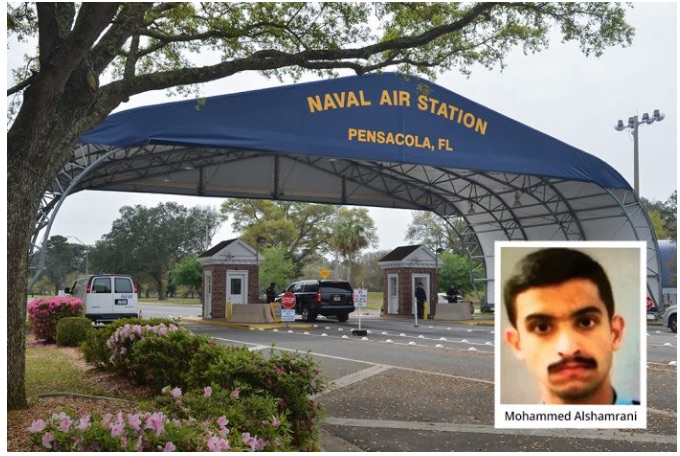
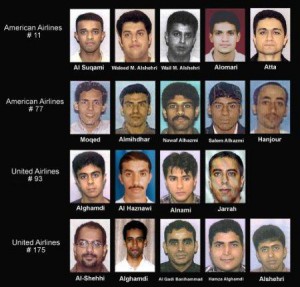
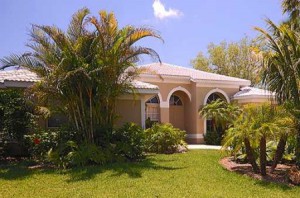
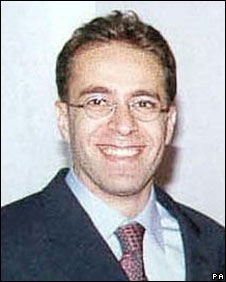
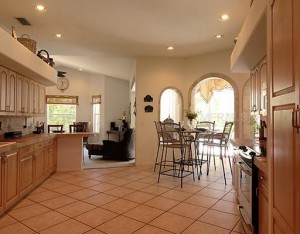
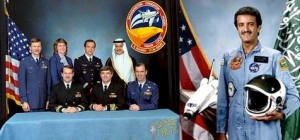
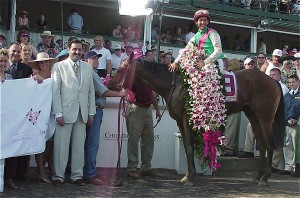
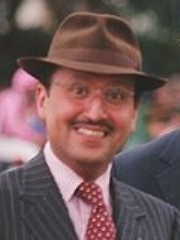
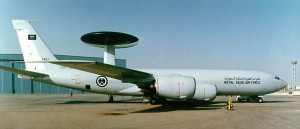
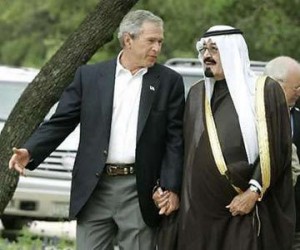
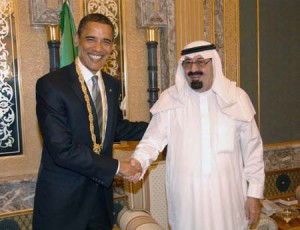


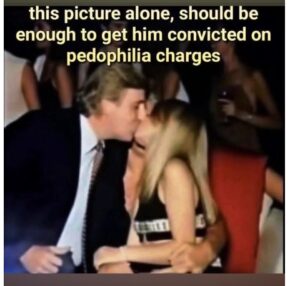
I’m so sick of the lie that the US needs Middle East oil. We don’t. Under the west lies the world’s largest deposit of oil. Vastly larger than Saudi Arabia. So let’s stop pushing that cart up the hill.
Well, no one else is around, so I may as well keep posting.
Happy Zagmuk to all….from an excellent site I just came across.
https://ncc-1776.org/tle2019/tle1050-20191208-02.html
The MSM keeps blabbering that the gun used in this alleged shooting was purchased legally. How can a non-citizen Saudi national purchase a gun legally?
Since I am not familiar with those MSM reports, I can only make a general response.
The gun may have been purchased legally, but that does not mean the Saudi purchased it.
Also, In Florida, a gun can be legally purchased in a private sale (as at gun shows) with absolutely no registration.
The AEC had many tons of Resin Earth on standby for 911….they were ready to roll and did. Those tons of Resin Earth were spread around the Twin Towers site several times on and after 911 Day. Resin Earth in those yellow dump trucks is only used for one purpose….nuclear decontamination. It soaks it up and is then removed. NYC and Pres. Bush had to know in advance 911 was a nulear event. Wouldn’t that make the Federal Government and the State of NY, plus the Mayor, participants in a crime? The crime of nulear bombing NYC.
Dr. Fetzer…Very happy you added that editors note. The article most definitely left me shaking my head. Seems the entire event (which I doubt is authentic….likely staged) is simply presented to further distract from the Zionist involvement in 9/11.
Will, thought you might be interested in this letter to Paul Craig Roberts from a 9/11 first responder.
From a Member of a Ground Zero Medical Disaster Team:
Thank you. You tell the truth. I spent a few weeks at ground zero starting a few days after they fell. I was on a medical disaster team and something never felt right. Our bags were searched on the way in and out. No cameras were allowed. We were told not to listen to rumors that went around and to not remove anything from the sight because it was a crime scene. When they said they found that guys passport who headed up the hijacking, We all laughed. The pile of debris was two miles around and a hundred feet high and burning. It was hard to identify a body let alone find a piece of paper after a week. The only way we knew the fireman was because of their fire proof coats. No one was looking for pieces of paper. After weeks, the fireman were still going through three pair of boots per day because the soles melted. They were looking for their friends. Nobody on that pile was doing anything else. Immediately after l went home the anthrax scare started. The letters were mailed through my local post office in Hamilton Twp NJ. The post office employee who picked up the mail and was the first diagnosed with anthrax was never interviewed by the FBI. I know the doctor who diagnosed him and reported to the FBI. The patient and the doc kept waiting for the FBI to come and talk to them and they never did. After these odd experiences,l lost trust in the government l worked for. It didn’t pass the smell test. Just as a side note, I have developed severe lung disease and skin cancer due to my service. I thought l was doing something noble but now feel like a stooge.
Thanks for telling the truth.
The post From a Member of a Ground Zero Medical Disaster Team: appeared first on PaulCraigRoberts.org.
They wanted nothing removed that could have been examined and go against the official lie…er, I mean narrative. Gawd forbid anyone sneak in a Geiger counter that would have revealed ‘problems’. Of course, the thousands of tons of steel that was removed and found its way to China wouldn’t matter…ummm…I guess that wouldn’t count in any forensic examination….after all, it would only indicate traces of jet fuel . Yep. It was a crime scene, OK….except the ‘crime’ was how they handled the scene.